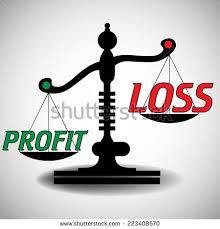Profit or Loss
Algebra
Level
3
 A man sold two articles for $ 1000 each. On selling first if he gain 10% and on other he loses 10 % His gain or a loss percent in entire transaction was
A man sold two articles for $ 1000 each. On selling first if he gain 10% and on other he loses 10 % His gain or a loss percent in entire transaction was
1 %
20 %
0.2 %
0 %
This section requires Javascript.
You are seeing this because something didn't load right. We suggest you, (a) try
refreshing the page, (b) enabling javascript if it is disabled on your browser and,
finally, (c)
loading the
non-javascript version of this page
. We're sorry about the hassle.
Let x be the amount the man paid for the article that he gained 10% on in the sale, and y be the amount the man paid for the article that he lost 10% on in the sale. His profit can then be given by 0 . 1 x − 0 . 1 y . We also have the relationship 1 . 1 x = 0 . 9 y = 1 0 0 0 . Now, the percent gain in the entire transaction is given by x + y 0 . 1 x − 0 . 1 y . This is how I simplified the expression for the percent gain to get the answer: Multiply the numerator and denominator by 1 1 . This gives 1 1 x + 1 1 y 1 . 1 x − 1 . 1 y = 9 y + 1 1 y 0 . 9 y − 1 . 1 y = 2 0 y − 0 . 2 y = − 1 %. (Note that the amount of $1000 could've been anything, and it would not have affected the answer.)